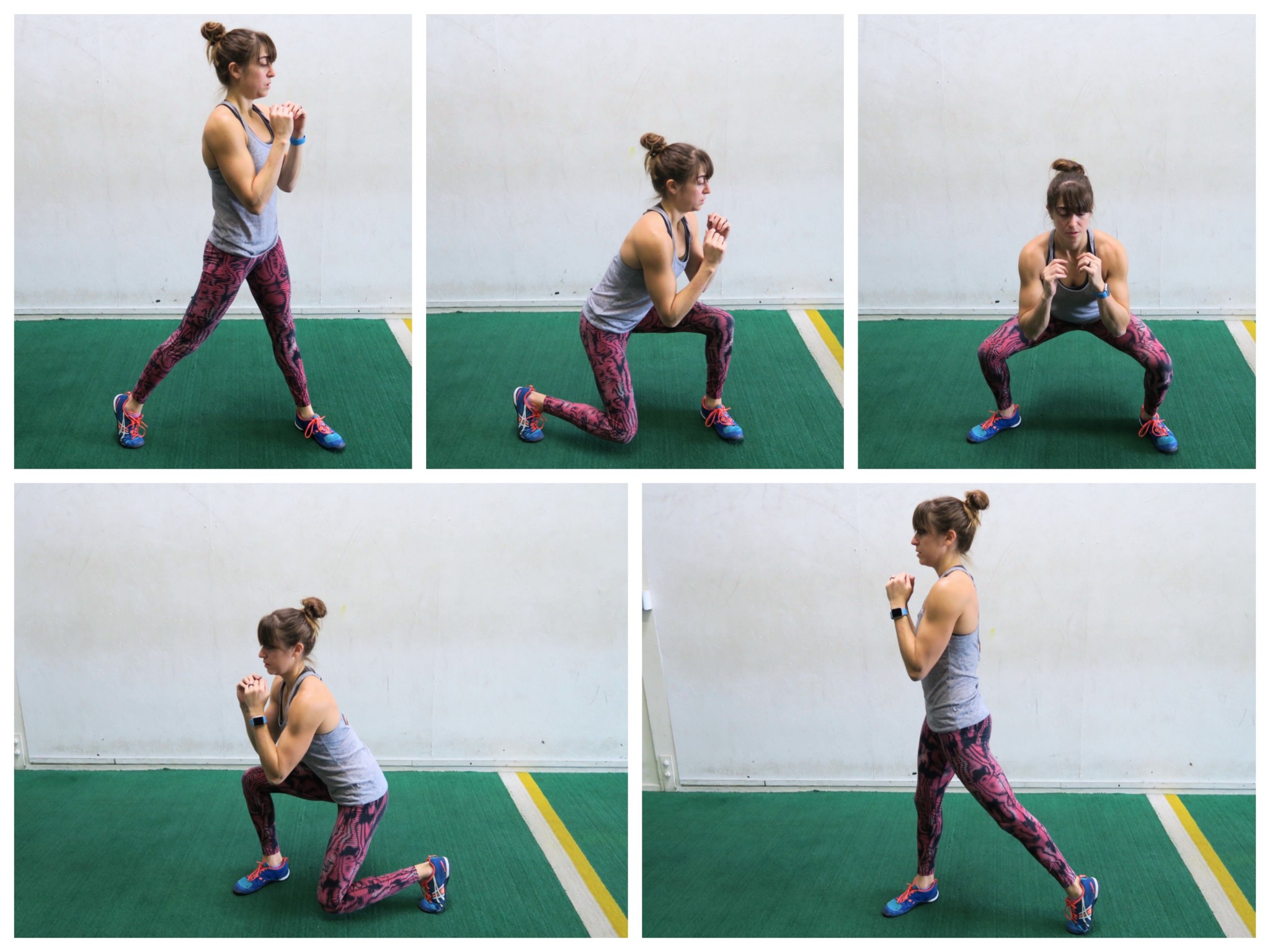Duck Under Lunges

To do the Duck Under Lunge, you can hold a weight up at your chest if you have it. Start standing up nice and tall with your chest pressed out and your feet about shoulder-width apart. You may turn your toes out slightly or simply allow them to turn out as you go through the movement.
Then squat down, sitting your butt back while keeping your chest up. Make sure your heels stay down as you squat down as low as you can with good form.
As you move to come back up out of the squat, you will rotate toward the right, pivoting your left foot as your right foot slightly opens up. As you pivot, pop up out of the squat and squeeze your glute as you come up. Stand up nice and tall, facing to the right with your back leg in triple extension. Do not let your foot stay put and your knee cave in. You want to pivot and use your glute to power the pivot and pop up.
Then begin to lower back into a squat and, as you sink, rotate back center. Your feet will pivot back and both heels should be down as you come into the squat. As you come back center, you will then want to begin to pivot and rotate up toward the left side, pivoting your right foot. Keep your chest up the entire time and do not let your back round toward the ground. Keep your core engaged so that you don’t feel this in your low back. Also do not lean forward to try to get lower to the ground. While you can hinge a bit at the hips, you don’t simply want to lean forward to “duck under.” You actually want to squat down as low as you can.
Pivot to the left and pop up to stand up tall out of the squat, feeling your glute engage to power the pivot and move to standing. Then sink back into the squat and quickly pivot up to the first side.
As you get comfortable with the move, try to make it as fluid as possible, squatting as low as possible while quickly moving between the pivots and standing up. The move should almost look like you are drawing a “U” shape. Beginners may need to make it look more like a “V” until their hips open up more.
Move quickly and really engage your glute at the top!
